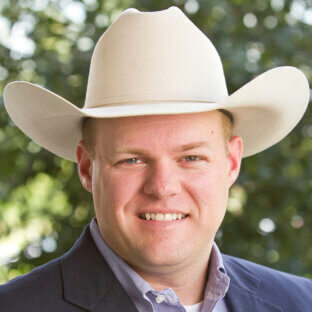Rules of thumb can be dangerous because they are simplified, generalized algorithms that we use instead of a more detailed, accurate calculation. Many times, however, rules of thumb are very useful when you need a quick estimate of a quantity or relationship. Rules of thumb in the cattle business can be developed from cumulative years of experience from many producers and are often verified when they are evaluated with replicated research studies.
Some of my favorite cattle nutrition rules of thumb (in no particular order) are:
- It takes one round bale of hay to feed one cow for one month.
- Hay rings reduce hay waste by at least 10 percentage units.
- Stressed calves, limit-fed yearlings and cows need 24 inches of bunk space per head.
- Cows need 30 to 40 square feet of shade per head.
- Cattle drink about 1 gallon of water per 100 pounds of body weight (BW) in the winter and 2 gallons per 100 pounds in summer. Lactating cows drink about twice the amount of water as dry cows.
- Cattle will consume 1.5 percent of BW of low quality forage per day, 2 percent of their BW of medium quality forage per day, and 3 percent of their BW of high quality forage per day.
- A 50-pound bag of minerals should last 10 cows almost a month.
- Supplement conversion ratio (the amount of supplement fed relative to the amount of additional average daily gain) can be as good as 2:1 when feeding 1 to 2 pounds of a high protein supplement with monensin to calves grazing late summer native range. It is typically 6-7:1 when feeding less than 1 percent of BW of an energy supplement with monensin to calves grazing wheat pasture. It may be as poor as 15-20:1 when creep-feeding calves.
- Feeding spring-calving cows in the evening, rather than the morning, will cause substantially more of them to calve during the daylight hours.
- Cattle will typically eat no more than about 0.1 percent of their BW of salt per day. So if you want cows to eat about 1.5 pounds of cottonseed meal per day, make a 1:1 cottonseed meal:salt mix and offer it free choice. If you want them to eat about 3 pounds of cottonseed meal, make a 2:1 mix.
- Wheat pasture lease prices are typically about 2/3 of current feedyard cost of gain.
- All else being equal, a corn price increase of 10 cents per bushel will reduce feeder cattle price by about 80 cents per hundredweight.
Before relying on any of these rules of thumb, it is important to consider all of the factors involved and the natural variation that is expected in animals. Consult your professional advisor for more details. No guarantee is made on any of these rules of thumb.


Comments